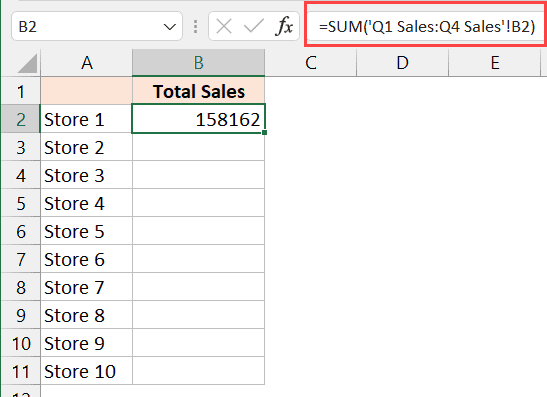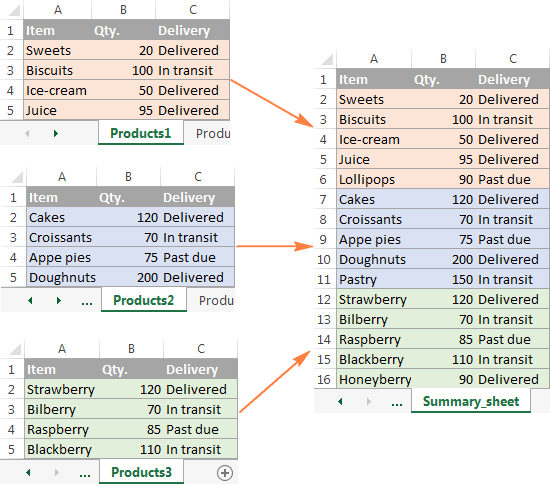Add Data Across Multiple Excel Sheets Easily

Managing data across multiple Excel spreadsheets can be both a challenging and rewarding task. Whether you're compiling financial reports, tracking inventory, or simply organizing a large dataset, Excel's ability to work with multiple sheets at once is a powerful feature that can save hours of manual work. In this comprehensive guide, we'll explore how to add data across multiple Excel sheets effortlessly, enhancing productivity and ensuring data integrity. We'll dive into various methods, from manual linking to using more advanced Excel features like 3D references and Power Query.
Understanding Excel's Multiple Sheet Capabilities

Before we delve into the specifics, it's beneficial to understand how Excel treats data across sheets:
- Workbooks and Worksheets: A workbook is your Excel file, which can contain multiple worksheets (tabs).
- Navigational Efficiency: Excel provides shortcuts and tools like the Workbook Connections manager to navigate through sheets with ease.
- Linking: Excel allows you to link data from one sheet to another, making it dynamic and automatically updating.
Method 1: Using Formulas to Link Data

The simplest way to add data across multiple sheets is through formulas:
- Click on the cell where you want to display the data.
- Type the equal sign (=) to start a formula.
- Navigate to the sheet where your source data is, click the cell, and press Enter.
For instance, if you want to show the value of cell A1 from 'Sheet1' in 'Sheet2' in cell B2:
- Go to 'Sheet2', select B2.
- Type: =Sheet1!A1
This method is great for small datasets or when you need to reference a single cell.
⚡️ Note: Changes in the source cell will automatically update in the destination cell.
Method 2: Consolidation with Excel's Consolidate Feature

For larger datasets or when you need to aggregate data from multiple sources:
- Go to the 'Data' tab and click 'Consolidate'.
- Choose the function you want to apply (e.g., SUM, AVERAGE).
- Add the ranges from different sheets using the 'Browse' button.
- Check 'Create links to source data' for dynamic updates.
| Source Sheet | Range |
|---|---|
| Sheet1 | A1:A10 |
| Sheet2 | B1:B10 |
| Sheet3 | C1:C10 |

📌 Note: This method is particularly useful when you need to compile data from different sheets into a summary sheet.
Method 3: Using 3D References for Analysis

3D references allow you to work with the same cell or range across multiple sheets:
- If you want to sum the same cell (let's say A1) across 'Sheet1', 'Sheet2', and 'Sheet3', use:
=SUM(Sheet1:Sheet3!A1)
This method is excellent for quick data analysis across a range of similar sheets.
Method 4: Power Query for Data Transformation

For more advanced scenarios, consider using Power Query:
- Select your data range, then go to 'Data' tab, and click 'From Table/Range'.
- In the Query Editor, combine multiple sheets with the 'Append Queries' feature.
- After transforming and cleaning your data, load it back into Excel.
Method 5: VBA Scripts for Automation

If you're comfortable with VBA (Visual Basic for Applications), you can automate data aggregation:
Sub AggregateData()
Dim ws As Worksheet
Dim lastRow As Long, i As Long
Dim destination As Range
Set destination = ThisWorkbook.Sheets("Summary").Range("A1")
For Each ws In ThisWorkbook.Worksheets
If ws.Name <> "Summary" Then
lastRow = ws.Cells(ws.Rows.Count, "A").End(xlUp).Row
For i = 1 To lastRow
ws.Range("A" & i).Copy destination
Set destination = destination.Offset(1, 0)
Next i
End If
Next ws
End Sub⚙️ Note: Remember, VBA requires some programming knowledge but offers unparalleled control and automation capabilities.
After employing these methods, it's worth discussing some important notes:
🔥 Note: Ensure to save your work frequently when working with multiple sheets or large datasets. Excel can sometimes become unresponsive, especially with complex operations.
Summing up this guide, we've explored several ways to add data across multiple Excel sheets, from simple cell linking to complex data aggregation with VBA. Each method caters to different needs, allowing for flexibility in how you manage and analyze data in Excel. Whether you're a beginner or an Excel wizard, understanding these techniques can greatly enhance your data management skills, turning potential chaos into structured, accessible information.
Can Excel handle data from multiple files?

+
Yes, Excel can handle data from multiple files using Power Query or by manually linking data from other files through the ‘Consolidate’ feature or VBA.
How do I keep my linked data up-to-date?

+
When using cell references, your data will automatically update. For more complex scenarios, regular updates through VBA or Power Query can be set up.
Is there a risk of data corruption when linking?

+
If done correctly, there’s minimal risk. However, always save backups, and ensure linked files are accessible to avoid #REF! errors.



